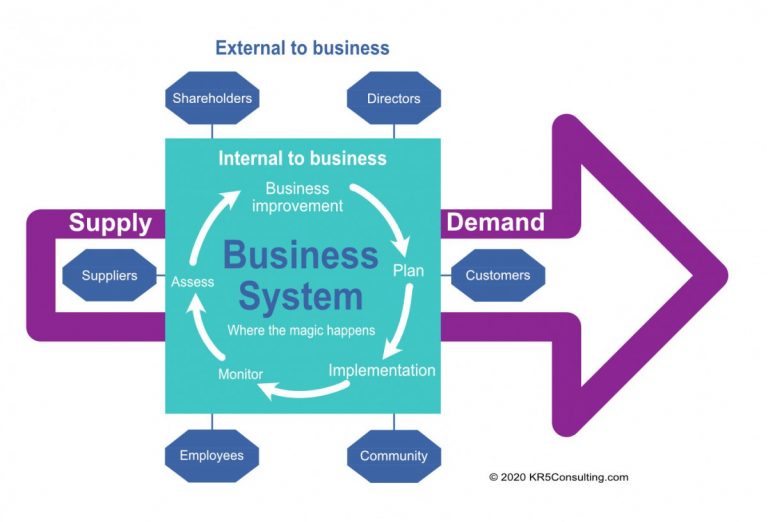Business leaders feel exposed when faced with gaps in their system
- Lost Opportunities
- Increased Operating Cost
- Firefighting
- Stressed Employees
- Customer Complaints
- Keyperson Risk

Your Business Deserves an Effective System
An Effective Business System Helps You Achieve More

Improved Performance
Enable your Business System to do the hard work. Avoid gaps and save time & money. Enjoy peace of mind.
Confidence & Control
Clarity with a clear overview of your Business System. Confidently prioritise & make more informed decisions to move your business forward.
Better Experiences
Better for customers. Easier and less stress for employees. Create an attractive workplace.
We help senior leaders of UK businesses with 10 to 250 employees looking to:
- Increase Efficiency & Productivity
- Build more Value in the Business
- Improve Customer and Employee Experience
It can feel bewildering making business changes and harnessing technology
How it Works
1. Book Appointment
Book a free no obligation 30-minute meeting.
2. Let us Listen
Allow us to listen & understand more about your business and what you need.
3. Execute a Custom Plan
Together we create and deliver your custom plan.

Your Business Deserves an Effective System
Improve Your Business System Performance with KR5 Consulting
Get your FREE PDF “Choosing Digital Technology – 10 Pitfalls for Every Business leader to avoid”
What's the Business System
Every operating business has a business system. It’s all the activities that drive the business forward. It’s where the magic happens, transforming the inputs into something of value. Building an effective business system enables the ideas and aspirations of leaders to come to fruition. The business system is what enables a business to scale and improve.

Leadership Challenge
As the business develops, leaders know that things must evolve and move with the times. When the Business System is overdue for improvement it can result in concerns about excessive cost or things falling between the gaps; leaders may feel vulnerable or exposed; or worry about employee welfare.
Why change a Business System
The Business System is how the business creates value. Therefore, it needs to be fit for purpose for the business to be competitive. Fit for purpose also means serving and balancing the needs of the stakeholders. For example, which might include making the business attractive for employees. Changes are often linked to:
- Speed to market
- Reducing cost
- Improving consistency and quality of service
Selected Business System Blogs
Selected Business System blogs for further information:
Your Business Deserves an Effective System
Improve Your Business System Performance with KR5 Consulting
Digital Technology
Digital technology is about using computers, mobile apps and other tools to store and process digital information. It includes Artificial Intelligence (AI), Virtual Reality (VR), Augmented Reality (AR) as well as the Internet of Things (IoT).
Leadership Challenge
Leaders know that digital technology is a key part of running any business. Failure to adopt the right technology can cause harm to a business. Unfortunately, it’s not always that straightforward. Some leaders buy solutions and feel disappointed with the results; others are frustrated with poor adoption; and a few struggle with false starts and slow progress.
Why adopt digital technology
Digital technology can enable a business to be faster and cost less. It powers the business so it can be efficient and productive. However, digital can also disrupt in exciting ways. Consider old tech applied in new ways, or new tech changing the game: These open up fresh possibilities. For example, in the past we’ve seen how online has disrupted high-street shops, and trading platforms disrupted both the hospitality and car industry. Generally, digital provides:
- Tools that serve the business to get work done faster, and free staff to add more value to customers
- Automation for speed and reduce non-value waste
- Analytics for faster decisions and insights to grow the business
Transformation
When we think of transformation, we might think of popular TV shows where a team of experts transforms a garden or house. It’s a marked change in nature, form or appearance. In business, this can vary from changing part of a business, through to industry disruption. Transformation is closely linked to leadership, moving from the current way of doing things, to a new way that increases business opportunity.
Leadership vs Management
You may know Stephen Covey’s jungle story from his book “Seven Habits of Highly Effective People”. You can quickly grasp the important difference between leadership and management if you envision a group of producers cutting their way through the jungle with machetes. They’re the producers, the problem solvers: They’re cutting through the undergrowth, clearing it out. The managers are behind them, sharpening their machetes, writing policy and procedure manuals, holding muscle development programs, bringing in improved technologies and setting up working schedules and bonus programs for machete wielders. The leader is the one who climbs the tallest tree, surveys the entire situation, and yells, “We’re in the wrong jungle!” But how do the busy, efficient producers and managers often respond? “Shut up! We’re making progress.”
Leadership Challenge
As leaders strive to move the business forward, they can become frustrated about going round in circles; perhaps uncertain about which direction to take; or may struggle to break away from current thinking. This requires fresh thinking and a new perspective. A complete business overview gives leaders confidence in a chosen path. On the other hand, missing the big picture can result in solving the wrong problem or solving the right problem in the wrong way: Either way this can result in delays, cost, and poor business outcomes.
Why transform
Transformation is driven by a need to be competitive, or reduce the cost of being competitive. The changing industry, competition and customer needs mean that every business must evolve. That’s the cost of maintaining leadership, breaking into a new markets, or responding to change. Therefore, common drivers for transformation are:
- increasing value
- improving efficiency, productivity or reducing cost
- realising new opportunities




